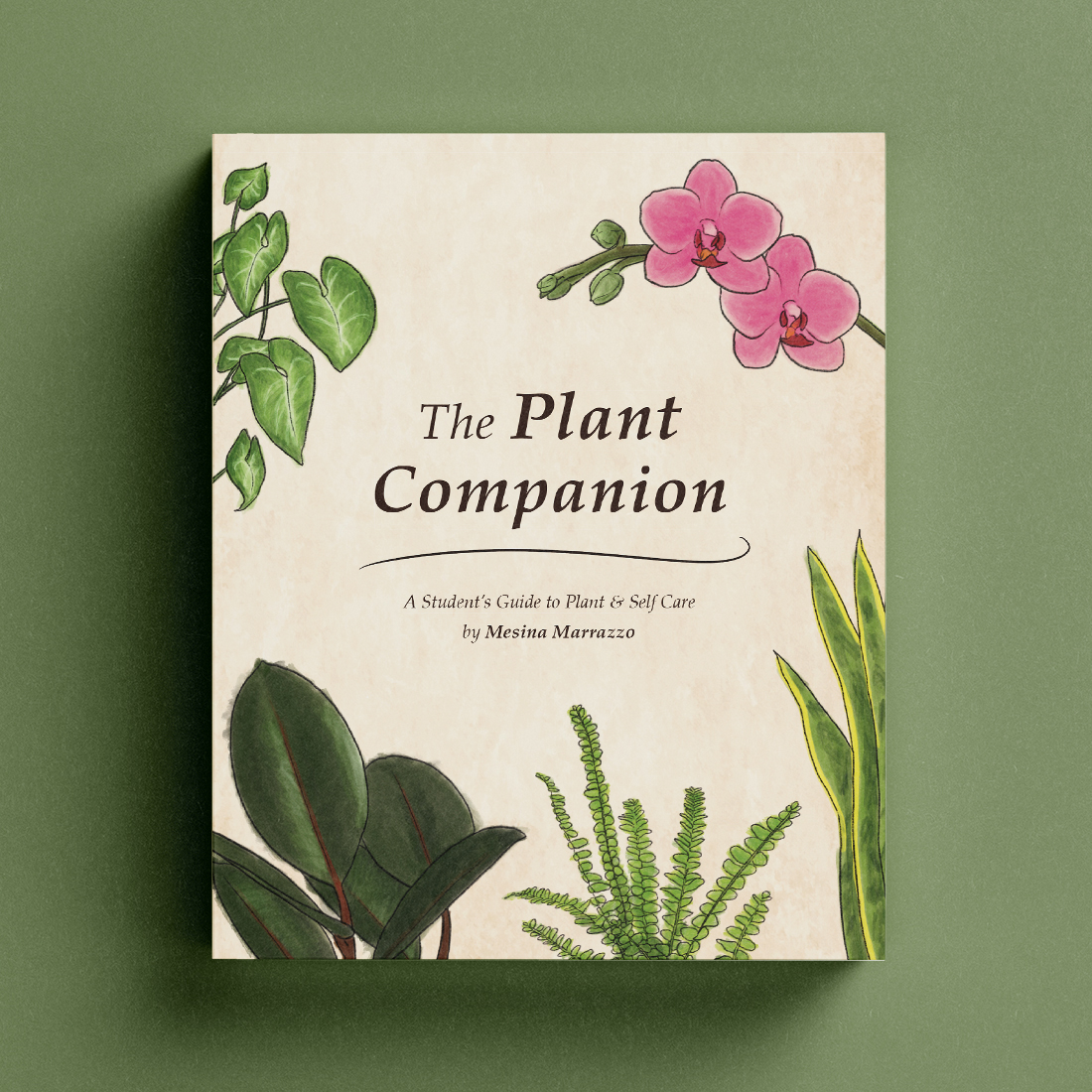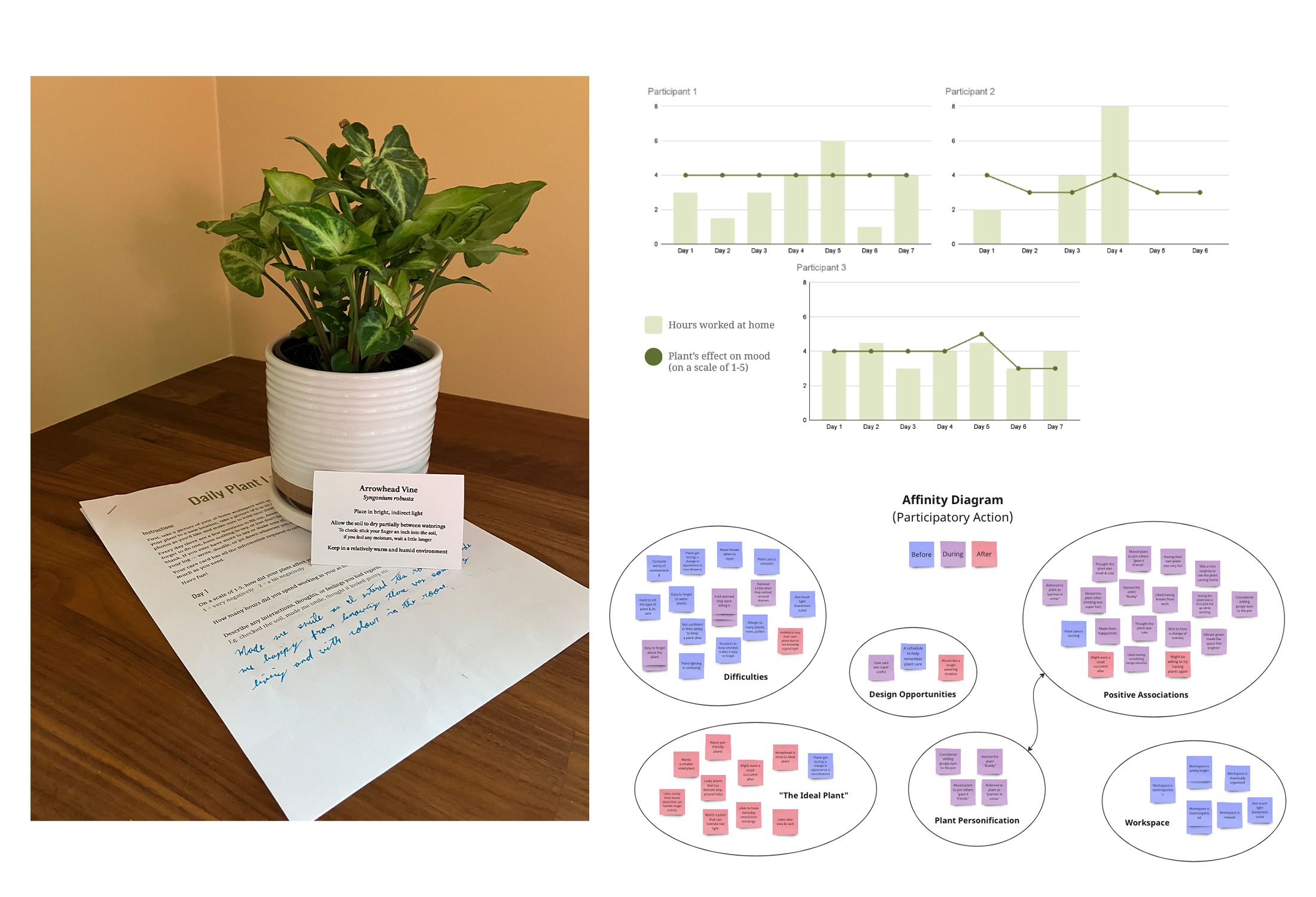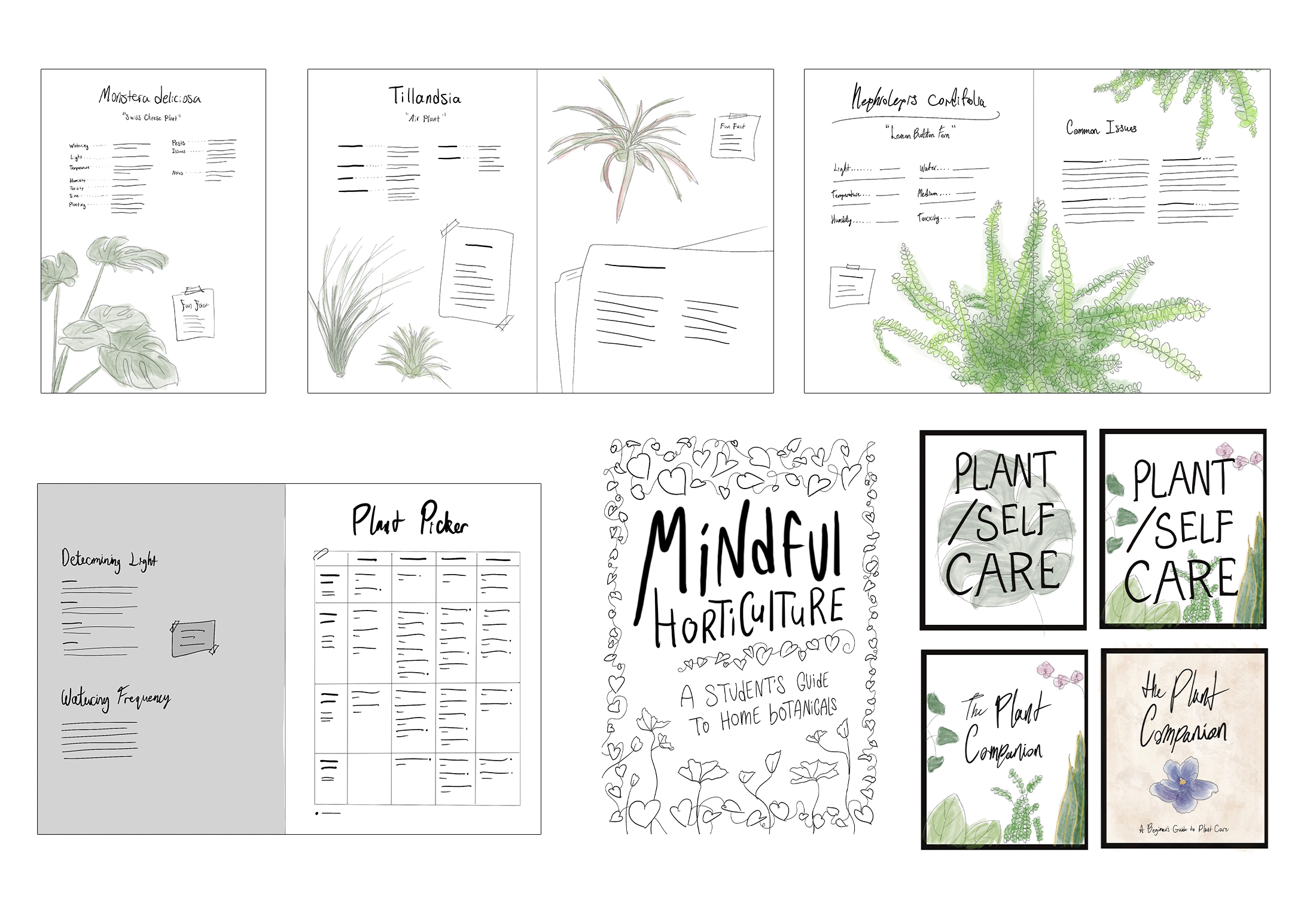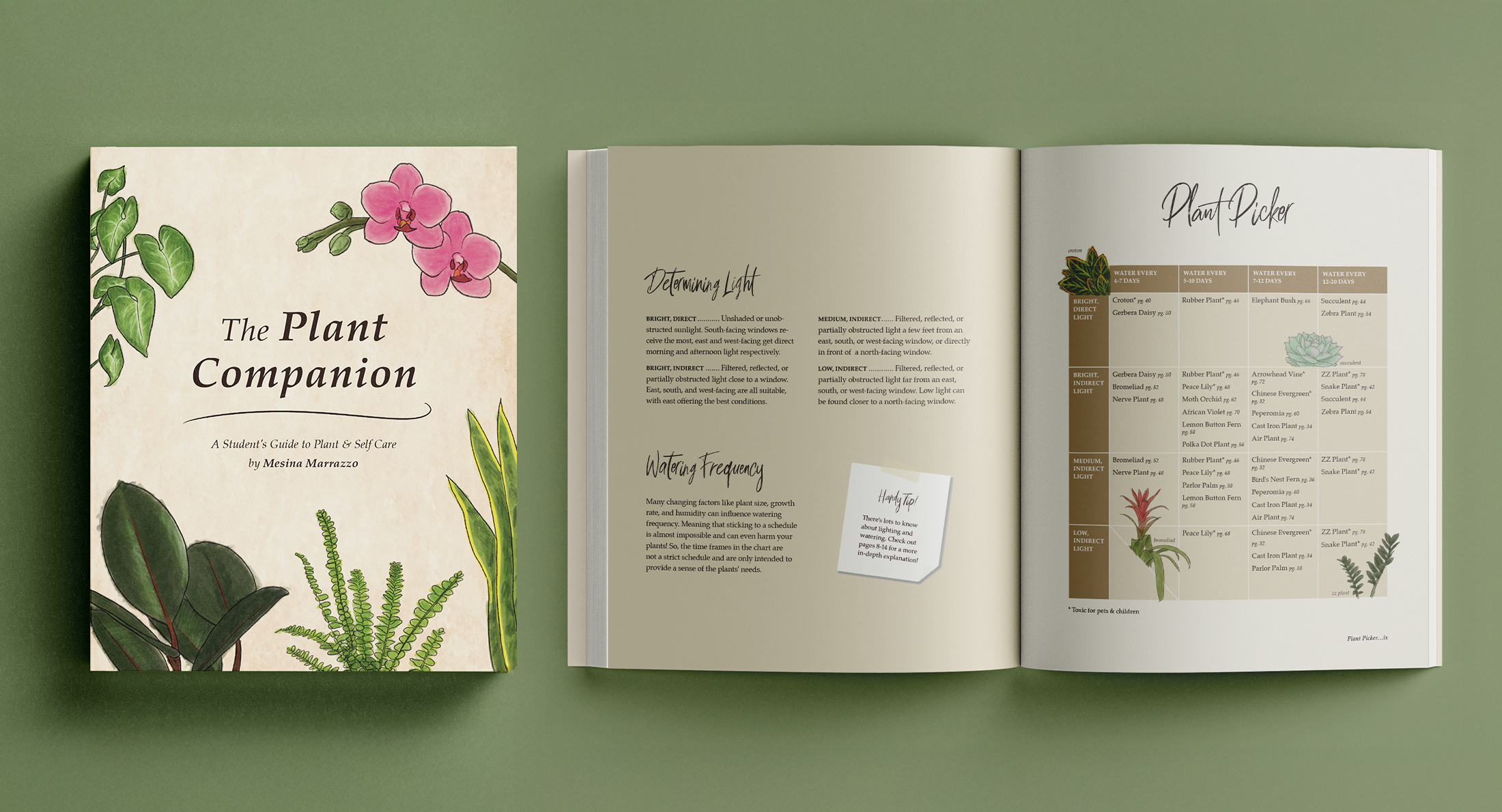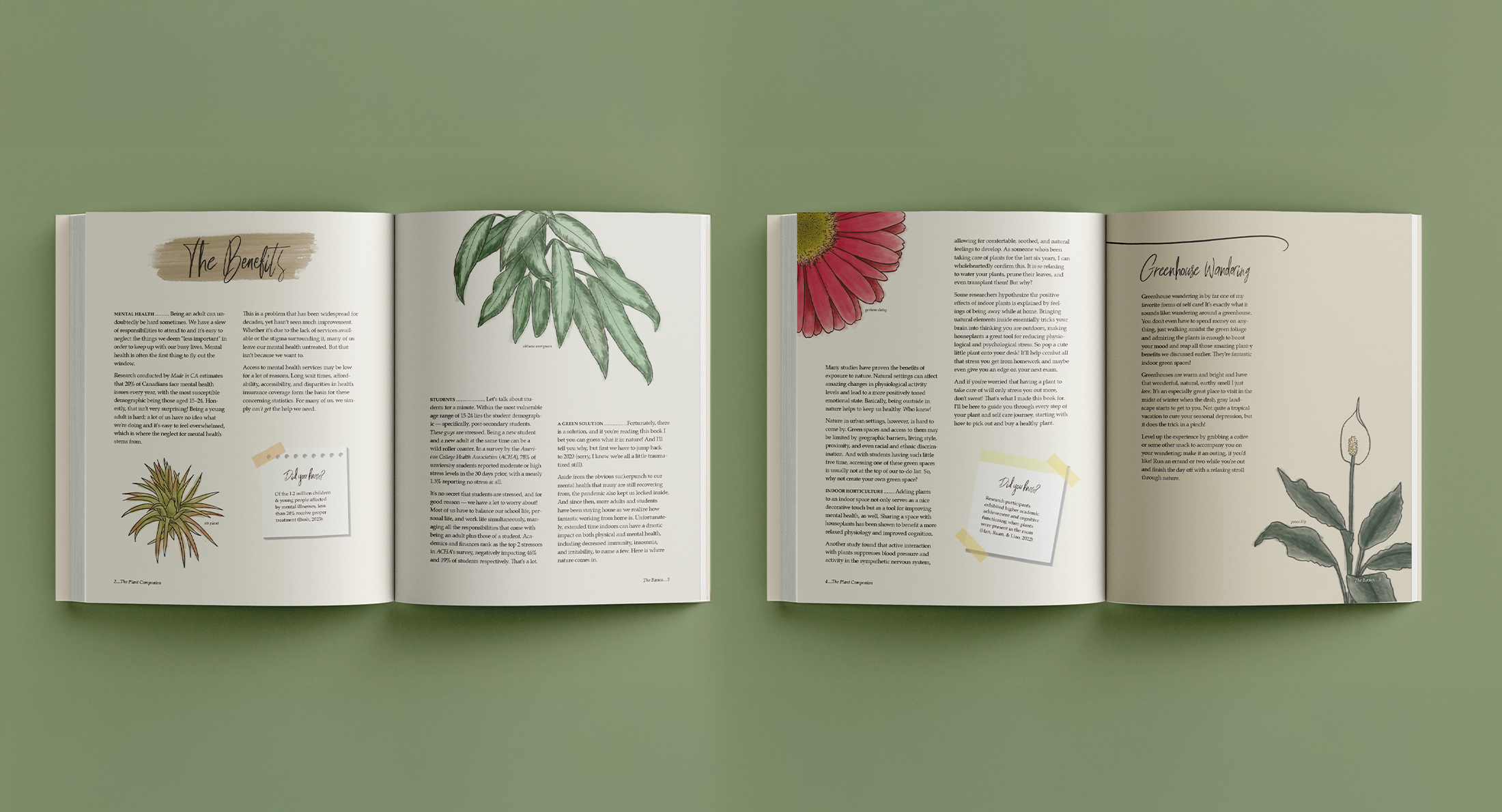The Plant Companion is a plant guidebook designed to encourage university students to improve their mental health through indoor plant care. Designed to make plant care a form of self-care, this book has a wealth of information and resources, including plant care basics, species profiles, self-care activities, and a helpful plant picker chart.
My workspace geography exercise asked participants to sketch a recreation of their at-home workspaces then colour code specific items or areas in their sketch based on any emotions associated with them. This gave me some insight on the appearance and organization of student spaces and how they feel working in them.
My participatory action invited participants to care for a plant for one week. They were given a small card with brief care instructions. Participants were interviewed before and after and asked to fill out a daily log of 3 questions while they had the plant. The goal was to observe how introducing a plant to a work environment affects students and how the experience can be made easier and more beneficial.
Through my research, I found that students struggle with interpreting plant care and applying their knowledge confidently. They struggle to find all the information they need in one place so I began sketching layout ideas for a plant guidebook which would act as the ultimate beginner’s guide.
Through further digital iterations, I refined my interior layouts, cover, and developed my alignment chart. During this stage, I pursued a comfortable balance of white space and ways to make the spreads feel more inviting to beginners. Eventually, I settled on removing all traces of pure white and pure black — replacing them with brown tones for warmth, instead.
The Plant Picker chart simplifies the plant selection process, presenting students with a wide range of plant species selected to suit their workspaces. This helps plant care to feel less daunting for the new plant parent.
The first part of The Plant Companion contains basic plant care information regarding lighting, watering, and soil requirements as well as step-by-step instructions for transplanting and treating pests. Scattered throughout are self-care activities that prompt the audience to engage with their plants in fun and beneficial ways.
The second part of The Plant Companion features the plant profiles. Each plant species was carefully selected for its small/compact size, aesthetics, and tolerance, making them ideal for students with small spaces and low free time. The profiles feature bright illustrations, basic information, and a troubleshooting section.
